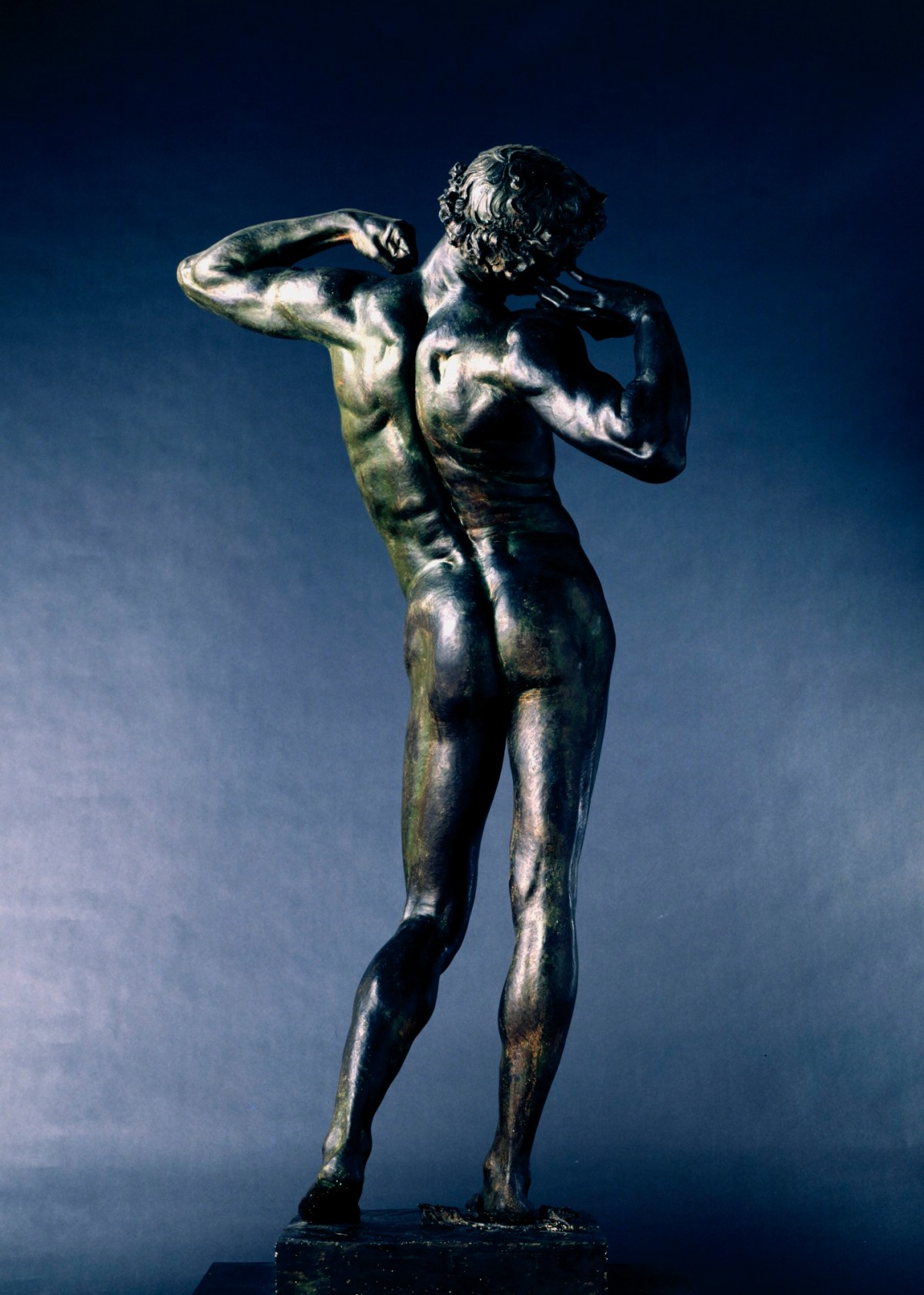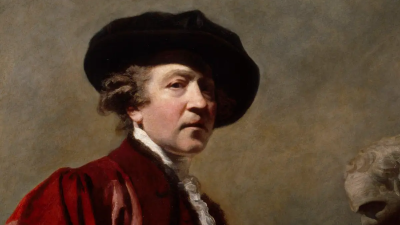
Lord Leighton PRA, The Sluggard, 1885.
Plaster. 1900 mm x 940 mm x 610 mm, Weight: 148 kg. © Photo: Royal Academy of Arts, London. Photographer: Paul Highnam.
This image is not available to download. To licence this image for commercial purposes, contact our Picture Library at picturelibrary@royalacademy.org.uk

Lord Leighton PRA, The Sluggard, 1885.
Plaster. 1900 mm x 940 mm x 610 mm, Weight: 148 kg. © Photo: Royal Academy of Arts, London. Photographer: Paul Highnam.
This image is not available to download. To licence this image for commercial purposes, contact our Picture Library at picturelibrary@royalacademy.org.uk
The Sluggard, 1885
Lord Leighton PRA (1830 - 1896)
RA Collection: Art
On free display in Collection Gallery
This plaster is a full size study for Leighton’s bronze sculpture The Sluggard, which he designed as a pendant to An Athlete Struggling with a Python. Leighton initially titled the sculpture 'An Athlete awakening from Sleep', but may have felt that the new title better emphasised the languid mood of the piece. The victor’s garland on which the Sluggard casually stands (added late in the piece’s development) enhances the abandonment of his pose. At the same time, by alluding to earlier athletic achievement, it ensures that the figure represents repose rather than idleness.
Giuseppe Valona, the Italian model who posed for An Athlete Struggling with a Python, was again used for The Sluggard. Edgcumbe Staley described the moment when: ‘Giuseppe Valona, the model, a man of fine proportions, weary one day of posing in the studio, threw himself back, stretched out his arms and gave a great yawn. Leighton saw the whole performance and fixed it roughly in clay straight off.’ This anecdote suggests the artist was inspired by the spontaneous movement of the model, but in fact same contrapposto pose was present in Leighton’s work as early as 1869.
The first study for the bronze was modelled in the early 1880s (a wax modello, possibly made from life by Leighton, is in a private collection) and the full-scale model was started in Sir Thomas Brock’s studio in 1885. It was finished by early 1886 and was then cast in bronze. He immediately modelled the scene roughly in clay. This formed the basis of this full-size sculpture.
Leighton’s bronze was exhibited at the RA exhibition of 1886, when as Edward Gosse wrote: ‘Sir Frederic Leighton, after so long a silence, came forward once more among the sculptors. His 'Sluggard' held the place of honour in the Lecture Room…In comparison with the ‘Athlete and Python,’ [The Sluggard] showed very distinct progress in the sculptor’s conception of his art. The nature of that progress may be defined by saying that he had passed from hardness into suppleness and flexibility, that the forms of flesh and bone were far more under his control than they had formerly been. No one could doubt, in examining ‘The Sluggard,’ that the influence of the French has been strong on Sir Frederic Leighton, nor that he had greatly admired the ‘Teucer’ of his own youthful colleague, Mr. Thornycroft. If it be not too technical to say so, one felt the thumb-touch in this splendid study of a powerful lad yawning and stretching; nothing could be modelled more closely in accordance with the principles of the new school.’
The bronze version of The Sluggard was later shown at the Paris Exposition Universelle of 1889 where Leighton was awarded a medal of honour. The work later became one of the most popular Victorian statuettes when reduced-scale bronze editions were made by Arthur Leslie Collie and cast by the Singer Foundry. A small bronze version of the sculpture is in the RA Collection, although this was cast from the (since destroyed) original plaster model presented by Leighton’s sisters in 1896 The modelling on the RA’s bronze statuette is noticeably less defined that the statuettes produced by Collie.
As noted by Gosse, The Sluggard relates more closely to the naturalism of early works by Hamo Thornycroft, Alfred Gilbert and Onslow Ford than the muscular classicism of An Athlete Struggling with a Python. Leighton particularly admired Gilbert’s Perseus Arming when it was exhibited at the Royal Academy Summer Exhibition in 1882. Leighton subsequently commissioned a statue from Gilbert, allowing the sculptor to determine the subject. This was Icarus.
The Sluggard has been described by Susan Beattie as a 'feeble variation of Rodin's theme' but the statue was considered sufficiently important to feature on Leighton’s tomb in St. Paul’s Cathedral (a model for which is in the RA collection). The tomb, designed by Thomas Brock in 1902, shows the reposing effigy of Leighton flanked by allegorical figures of Painting and Sculpture, the latter holding a statuette of The Sluggard.
Further Reading
Susan Beattie, The New Sculpture (New Haven & London: Yale University Press, 1983), p. 150
[Edward Gosse], 'The New Sculpture', The Art Journal , 1894, p. 281
Stephen Jones, Christopher Newall, et al, Frederic, Lord Leighton: Eminent Victorian Artist, exh. cat., Royal Academy of Arts, 1996
Object details
1900 mm x 940 mm x 610 mm, Weight: 148 kg
Associated works of art
3 results
Start exploring the RA Collection
- Explore art works, paint-smeared palettes, scribbled letters and more...
- Artists and architects have run the RA for 250 years.
Our Collection is a record of them.






